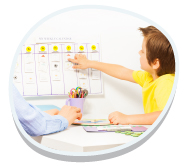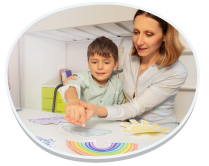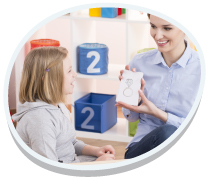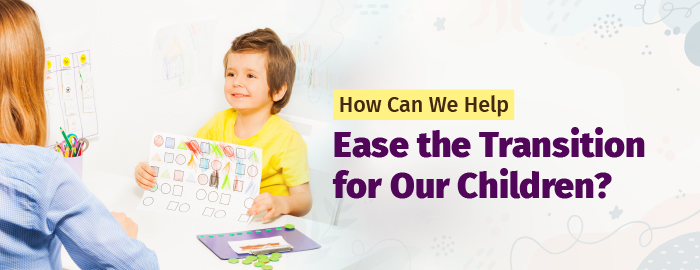|
Children on the autism spectrum have a strong tendency to be anxious when it comes to transitions, especially to a new environment. Here are some ways we can help ease the transitioning process for them.

A Calendar or Schedule
Using a calendar or schedule can help prepare your child for what to expect ahead of time. 
For example, your family has received an invitation to a birthday party that will take place in a week. You can help:
- Prepare your child by letting them know the date of the party
- Do a simple day-to-day countdown to remind them when the birthday party will be held
- Go through the expected appropriate behaviours (e.g. saying a birthday greeting, giving the birthday present, singing a birthday song and clapping along, sharing the cake and eating it, etc.)
It is not too late to start your child on the use of the calendar; however, it is important to use it daily. Encourage your child to cross out dates and/or highlight special days.
Visual Aids
A majority of our children on the spectrum are strong visual learners. As such, the use of visual aids/cues can benefit them more than verbal reminders.
Besides, the goal of behaviour education is to reduce dependence on visual/verbal cues and increase self-regulation. As visual aids are non-verbal, it would be easier to fade them out. 
For example, your child swims every Saturday and goes home immediately after. However, there has been a change of plan this Saturday; to go to Grandma’s house immediately after leaving the pool. You can help:
- Prepare your child by telling them the destinations for that day in advance (e.g. “We’ll be going to (specific swimming pool location) and then to Grandma’s house.”)
- Set up visual cues of the destinations and the expected appropriate behaviours (e.g. images of no crying, no screaming, etc.)
- Reward immediately with praise and/or things or food that your child loves when they transitioned successfully between the swimming pool and Grandma’s house
Functional communication and language are important, especially for children, when transitioning as it provides the children with an outlet to express their emotions. Most of the time, our children tend to be frustrated when they transition, but with the use of functional language, they are able to negotiate or express how they feel.
The Importance of Functional Communication and Why We Should Encourage It
We communicate with each other daily, which includes conveying our wants and/or needs, thoughts, perspectives, etc. The same goes for our children on the spectrum. Therefore, it is important to equip them with functional language to help facilitate and encourage their communication process.

Functional communication is a skill in which independence and spontaneous communication are encouraged when relaying one’s wants and needs. This is important for our children because it teaches them how to communicate appropriately instead of engaging in undesirable behaviours. For example, requesting attention appropriately when needed, requesting help when faced with a difficulty, conveying their wants and needs in environmental situations that are overwhelming for them, requesting more time spent with a preferred activity or when they are done with an activity, etc. Picture Exchange (PECS), assistive devices, gestures, and speech are different forms of functional communication.
The key is to practise as often as possible, preferably in the child’s natural environment. Alternatively, you can engineer situations to create opportunities for your child to use functional communication. For example, create a situation where the desired items are not readily available, leading your child to request for these items with the use of an assistive device, PECS, speech or gestures. Remember to honour all requests especially when your child spontaneously requests or interacts with you.
|



